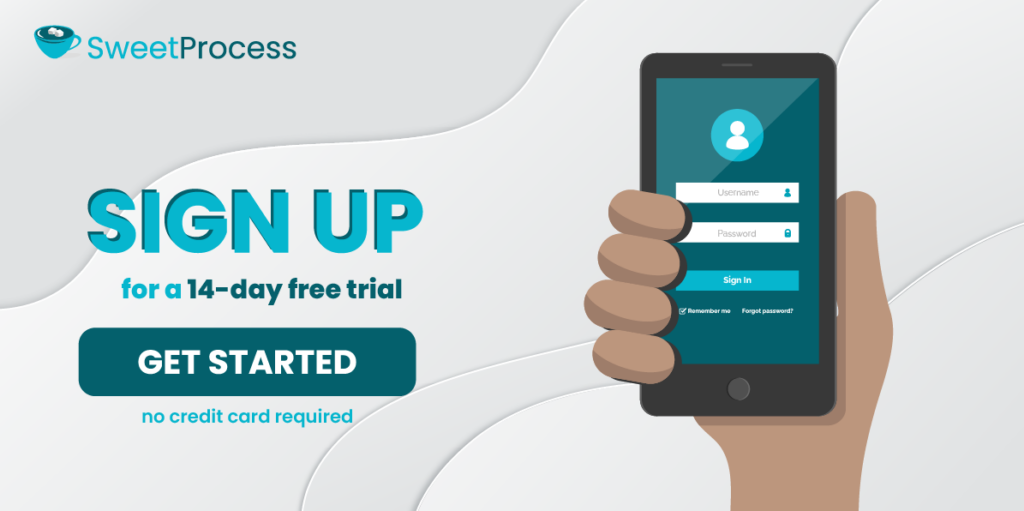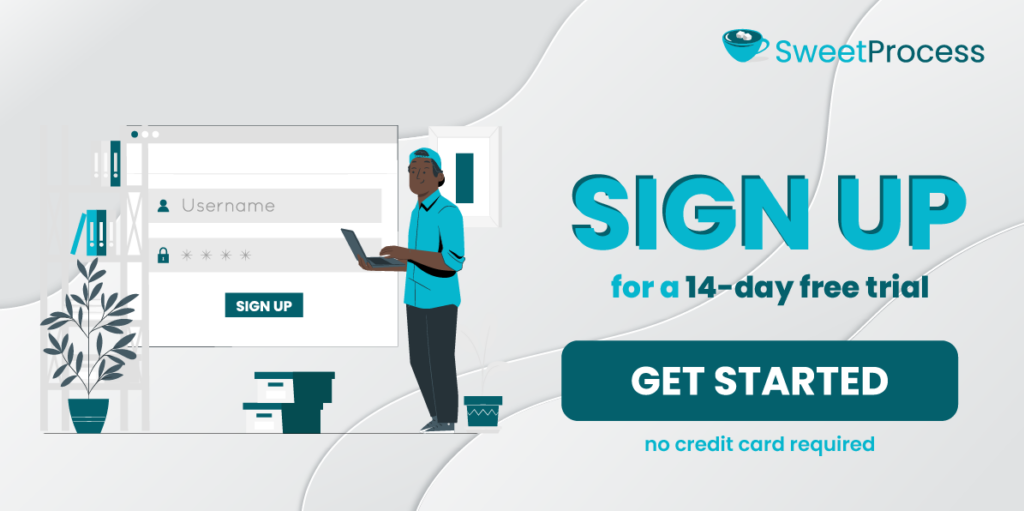Last Updated on August 21, 2025 by Owen McGab Enaohwo
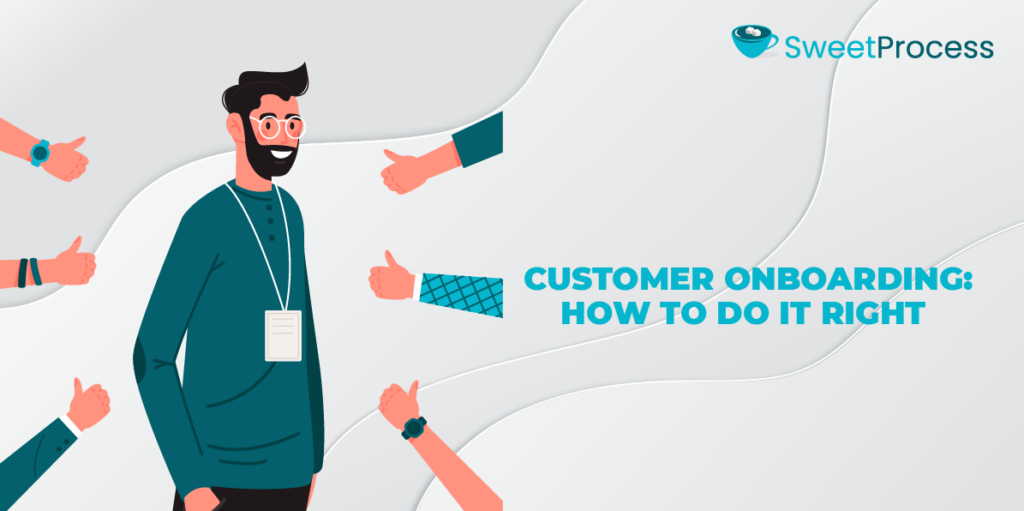
You only get one chance to make a first impression. For most businesses, that moment happens right after a customer signs up. After you send a welcome email or a how-to tutorial, what comes next?
Customer onboarding provides an opportunity to prove your value early. When done right, this structured process guides new users from their first login or purchase and converts them into long-term loyal customers. Once your customers fully understand how to use your product or service, it becomes easier to build trust and retain them.
Creating a comprehensive customer onboarding process sets up your business for success. Your new users will feel supported from the start, allowing them to become confident brand ambassadors.
How can you get it right? In this article, we’ll take a deeper look at customer onboarding, what it entails, how to simplify it, and share some helpful tips from experts.
Want to craft onboarding experiences that deliver value from day one? Sign up for a 14-day free trial of SweetProcess to create step-by-step onboarding workflows for your customers.
Table of Contents
Customer Onboarding: What It Entails
4 Key Phases of the Customer Onboarding Framework
How SweetProcess Simplifies Customer Onboarding
Why Is Customer Onboarding Important for Your Business?
Real World Customer Onboarding Examples You Can Learn From
Customer Onboarding Best Practices
Onboard New Customers Seamlessly Using SweetProcess
Customer Onboarding: What It Entails
Customer onboarding is the intentional process of educating, assisting, and empowering users to integrate your product into their daily routines. It bridges the gap between a customer’s expectations and actual product usage, ensuring they understand exactly how it solves their specific problems.
Think of it like guiding someone through a new city. Instead of just handing them a map and wishing them luck, you’d walk them through the key landmarks, show them how to navigate the streets, and point out the best spots to visit. In the same way, effective customer onboarding is your chance to guide users through your product and highlight the features that matter most to them.
As part of the client onboarding process, you’ll need to include:
- Product walk-throughs
- Customer welcome emails
- In-app checklists
- Training resources on the product or service
- Personalized support
For instance, a SaaS company offering HR software might start onboarding by:
- Helping customers import employee data
- Guiding them through setting up time-off policies and payroll workflows
- Following up on the progress to identify arising issues
The goal is to demonstrate the software’s capabilities and help users achieve meaningful outcomes fast.
4 Key Phases of the Customer Onboarding Framework
Roughly 90% of organizations experience some form of user churn during the onboarding stage. This mostly happens because the process is too long, lacks clarity, and structure. So, how can you set your business apart and achieve onboarding success?
Here are the four key phases of the customer onboarding framework and what they look like in practice:
Preboarding: Welcome and Account Setup
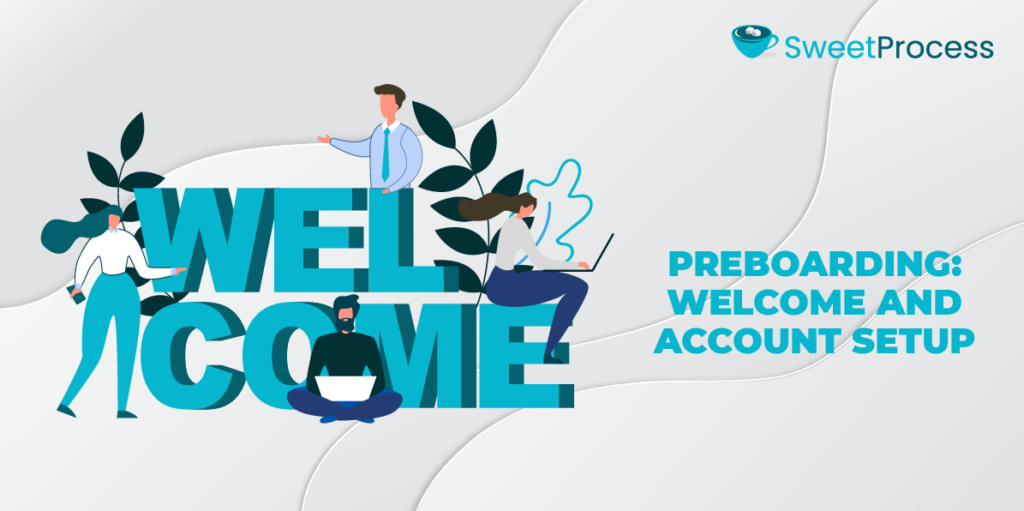
Your organization’s onboarding experience starts long before your customer logs into your product or service. The preboarding phase covers all activities that happen after the sale, such as confirming expectations and preparing the user for what’s next.
Imagine you just signed up for a new project management tool. What would make you feel confident about your choice? A warm welcome email? A checklist for getting started? A clear outline of what to expect in the first week?
This phase is your chance to create a strong first impression. You can provide clear setup instructions and assign an onboarding manager to ensure a seamless experience. A well-thought-out preboarding stage reassures the customer that they made the right decision.
Here are some of the key elements to include in this stage:
- Welcome message from the customer success or sales team
- Account setup guide or video tutorial
- Onboarding timeline or kickoff email
- Instructions on the first steps, such as importing existing data or inviting team members
Activation: Guided Product Tours
Once a new account is set up, ask yourself: what’s the one action a customer must take to experience value right away? And how can you help them get there fast?
An in-app walk-through or product tour video can help you introduce users to your product in a way that’s simple, relevant, and interactive. At this stage, you can provide a step-by-step guide that highlights core features relevant to their company goals, rather than overwhelming them with everything at once.
Engagement: Milestones and Support Touchpoints
Let’s say your product is a payment processing platform. After the initial setup, your team should check in with the user to ensure they have added all their accounts and integrated their payroll and existing payment systems.
Here are some of the ways you can ensure that your users stay active, meet success milestones, and don’t feel abandoned after the initial setup:
- Triggered emails based on behavior
- Milestone reminders and progress reports
- Live chat or Q&A (question and answer) webinars
- Customer success manager follow-ups
Proactively reaching out to users and ongoing engagements keep your customers on your platform.
Expansion: Training, Adoption Metrics, Handoff to Support
Once the customer is fully settled, the final phase focuses on deepening product adoption. This is also the phase to encourage feature discovery and ensure a smooth handoff to your customer support or account management team.
At this stage, you also want to reinforce the value your product brings and encourage advanced usage. For instance, you can offer role-specific training and showcase underused features. Many businesses use software for customer onboarding to streamline this process, ensuring clients discover the right features at the right time. You can also evaluate the usage data to identify new growth opportunities.
If a client is actively using your task management module but hasn’t touched the reporting dashboard, you could send them a case study or demo that shows how to track performance more effectively. The customer service team or account managers will continue to communicate with customers in case of any hiccups or new features that they need to be aware of.
How SweetProcess Simplifies Customer Onboarding
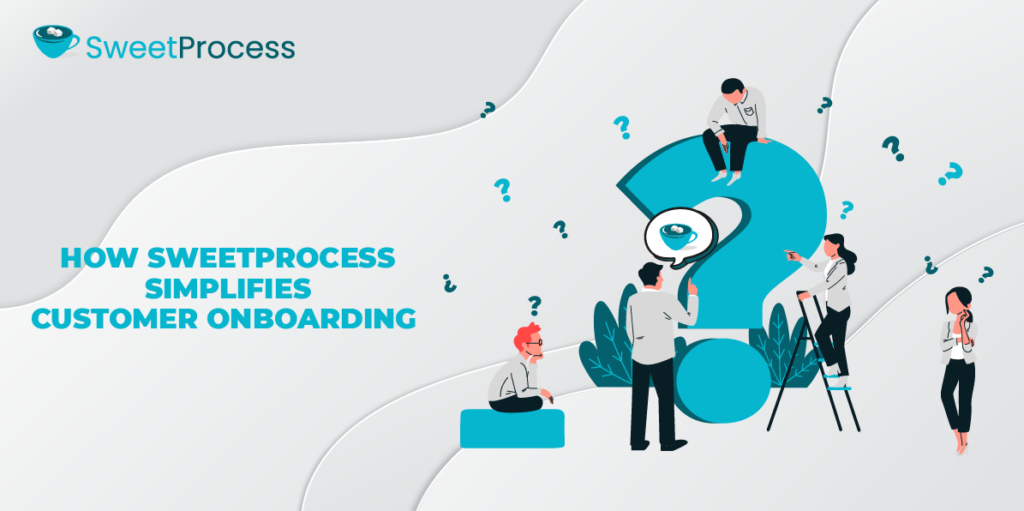
Your onboarding process can determine if your product or service adoption is successful or not. With a well-organized system in place, your teams will have proper documentation and training resources that streamline the onboarding flow. A tool like SweetProcess steps in to build a successful customer onboarding process.
With this cloud-based customer onboarding software, your organization can create, store, and share onboarding materials with both customers and internal teams. All the onboarding workflows are stored in one centralized platform, so you don’t have to use multiple business tools to execute your plans.
Let’s take a closer look at how SweetProcess supports every step of your customer onboarding journey:
Create Customer Onboarding Materials (Procedures and Policies) Seamlessly
With SweetProcess, you can document your customer onboarding steps in a clear, step-by-step format. You can create procedures for everything from account setup and product walk-throughs to billing guidance and compliance rules.

Instead of relying on scattered Google Docs or emailed PDFs, your customers get structured instructions and processes that are easy to follow and update as your product evolves.

Additionally, you can create a policy on key things like user data security or steps to activate key features. Once you create it, you can share it with specific customer segments.

Create a Customer Onboarding Checklist
Onboarding checklists help customers track their progress and ensure that they don’t miss a single step. With SweetProcess, you can design interactive checklists that align with your core success milestones, such as completing a profile, inviting teammates, or integrating with other tools.
This checklist provides customers with a sense of momentum and helps your team identify bottlenecks or points where users encounter difficulties.
For instance, an SaaS CRM might include a checklist with tasks such as “Import your contacts,” “Connect your email,” and “Schedule your first campaign” to assist the customer. To create a checklist, open the “Create Procedure” tab and add a title.

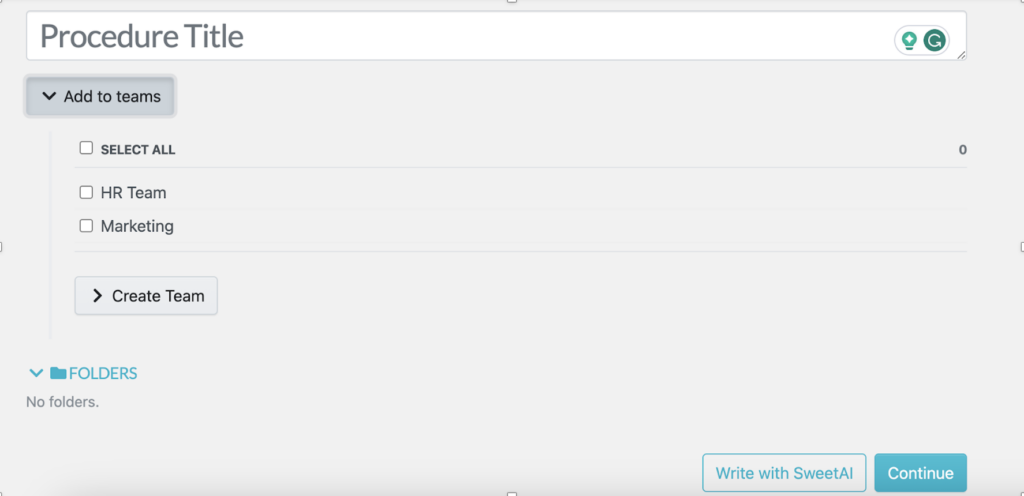
You could draft the procedure by using the “Write with SweetAI” feature.
Once the procedure is done, scroll down to the “ADD A STEP” section to add your steps.
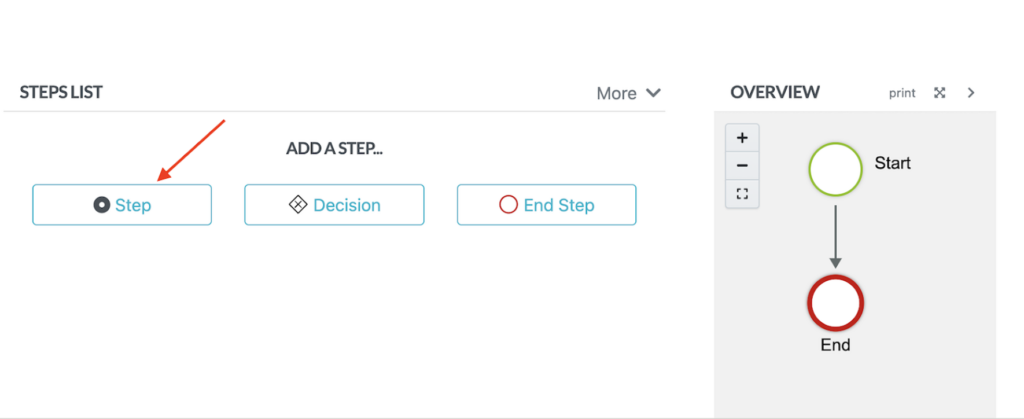
Create a Public Knowledge Base To Share Documents With Your Customers
Instead of having your customers dig through emails to find information, you can provide a public-facing knowledge base that covers all the information.
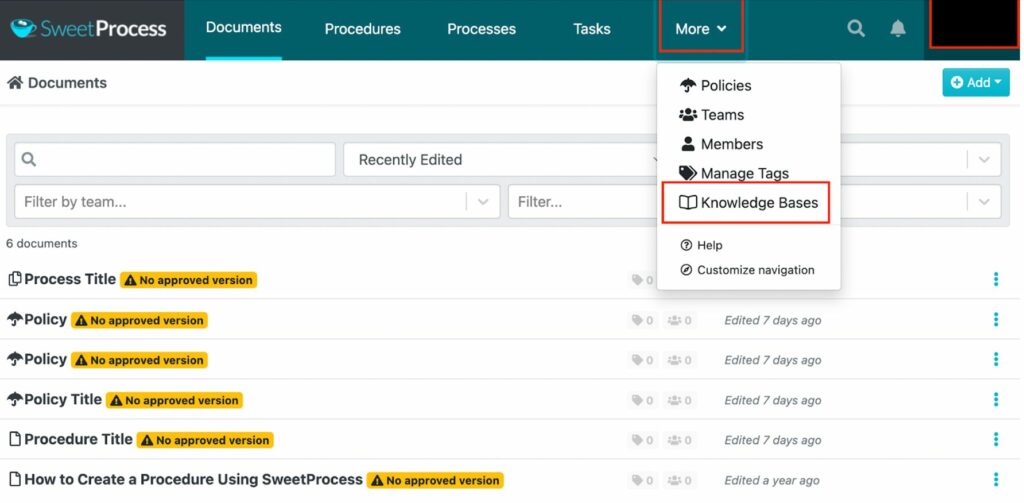
SweetProcess allows you to add guides, how-tos, and onboarding materials that are always up-to-date and accessible 24/7.
Since the knowledge base is intended for external stakeholders, you must select the public option on SweetProcess.

This reduces repetitive support queries and empowers customers to self-serve, especially during off-hours or in different time zones.
Collect Customer Information With Form Embeds
Customer onboarding requires input from the customer, whether it’s setting preferences, submitting business documents, or uploading brand assets. With SweetProcess, you can embed forms directly into your procedures to collect information efficiently and store it securely.
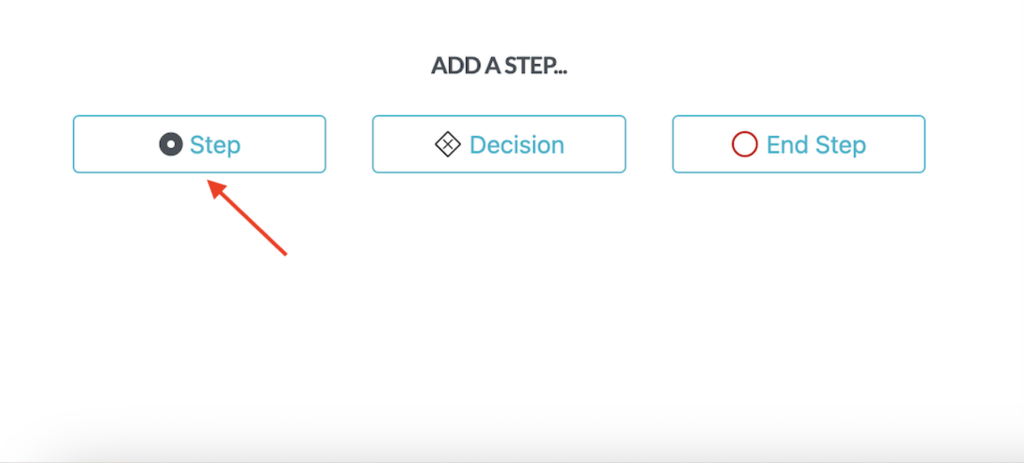
When you add a procedure, scroll down to the “ADD A STEP” section and then “Add Form Field.”
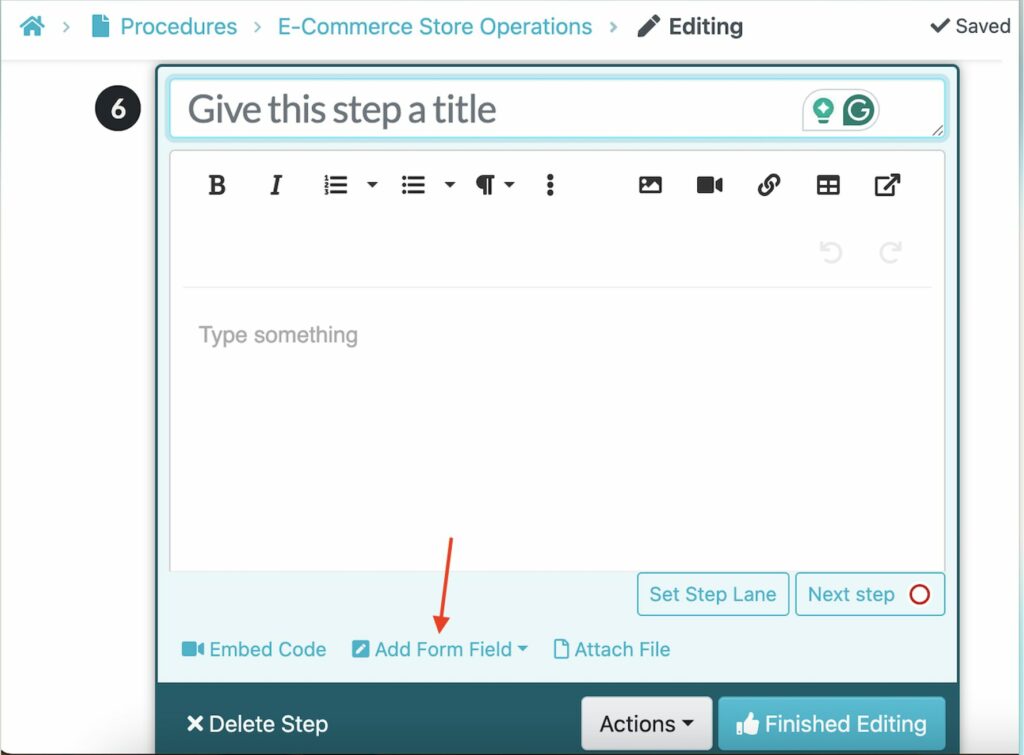
For instance, if you’re onboarding an e-commerce store, you might include a form to collect product data or warehouse details within the setup guide.
Invite Customers As Guests To Collaborate on Your Company Documents

If you need to create or customize onboarding steps for a specific customer, you can use SweetProcess to invite clients as guests. This way, they can view, comment on, or contribute to shared documents.
As you assign tasks, you can invite a customer to view key documents:
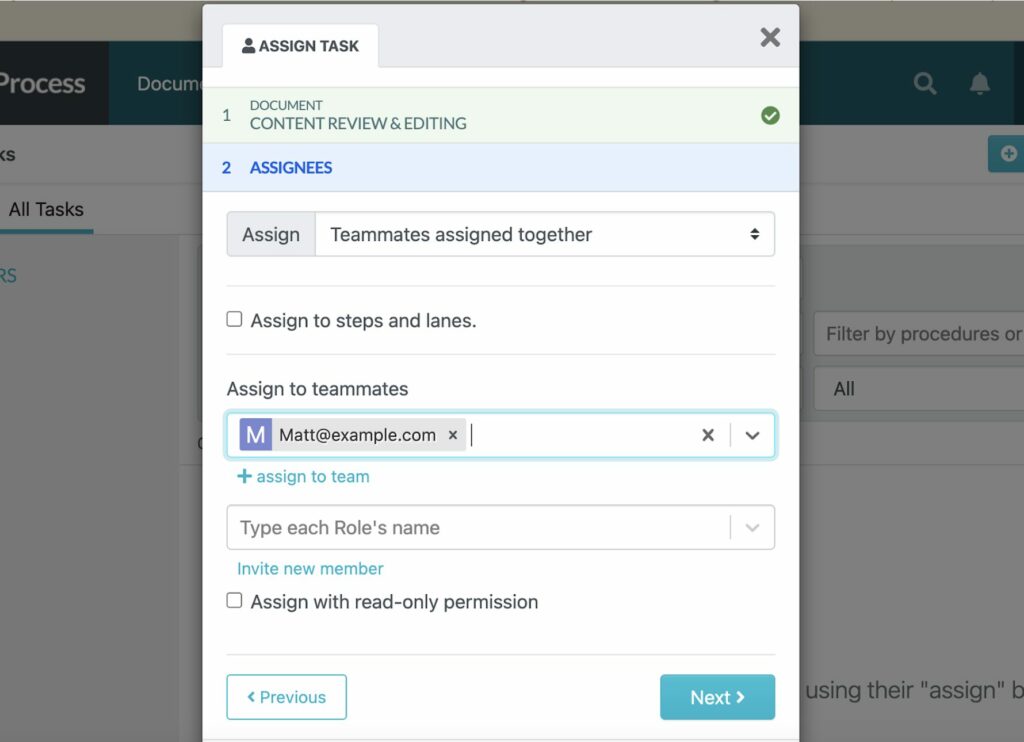
Your guests will receive an invite link to access the documents.
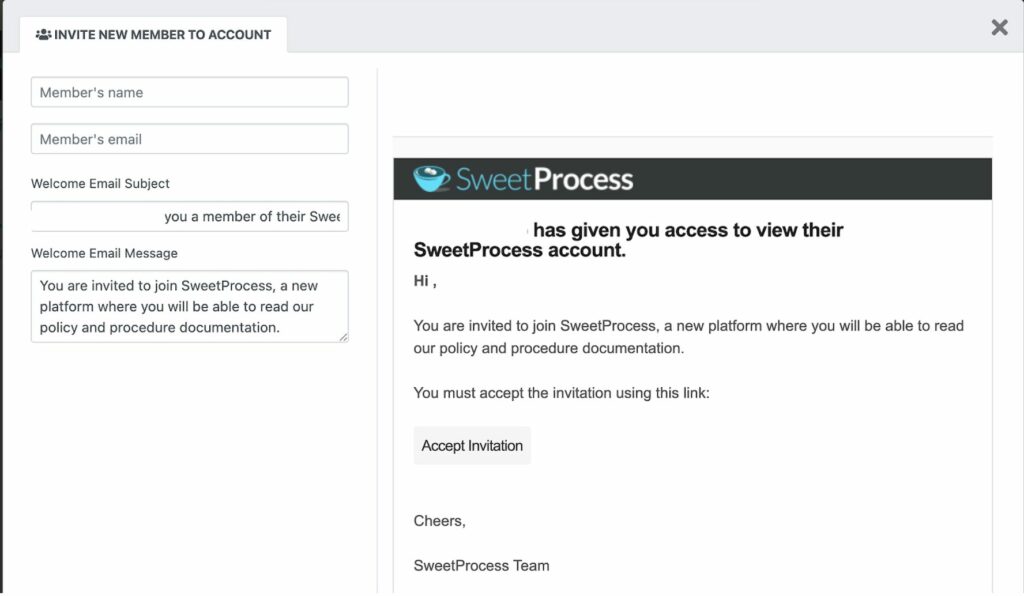
Manage Your Company’s Knowledge Base and Documentation in One Place
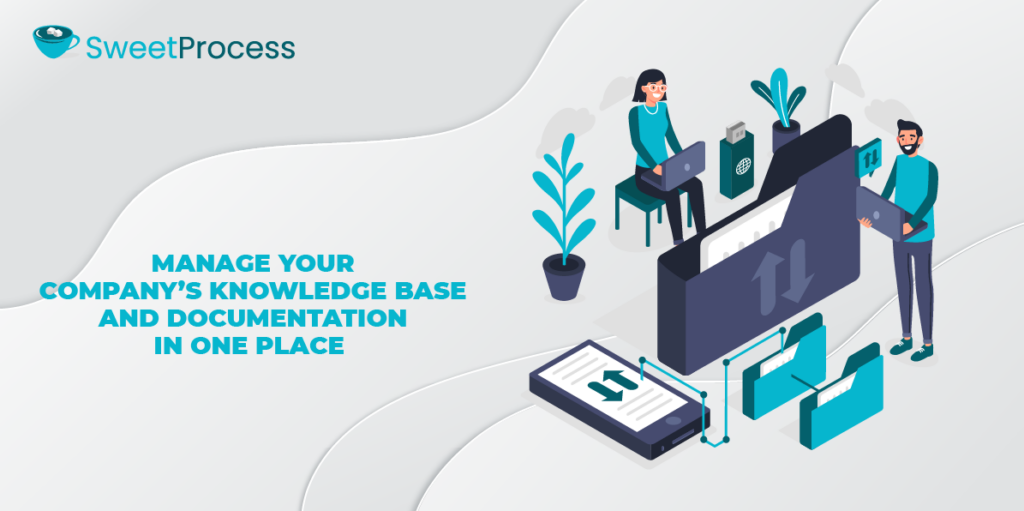
SweetProcess serves as your central hub for all documentation-related tasks, encompassing customer-facing content and internal standard operating procedures (SOPs). With SweetProcess, you don’t have to worry about scattered folders or outdated documents. Everyone has access to consistent, accurate, and easy-to-navigate information on the knowledge base.

If you access the dashboard, you can view the knowledge base.
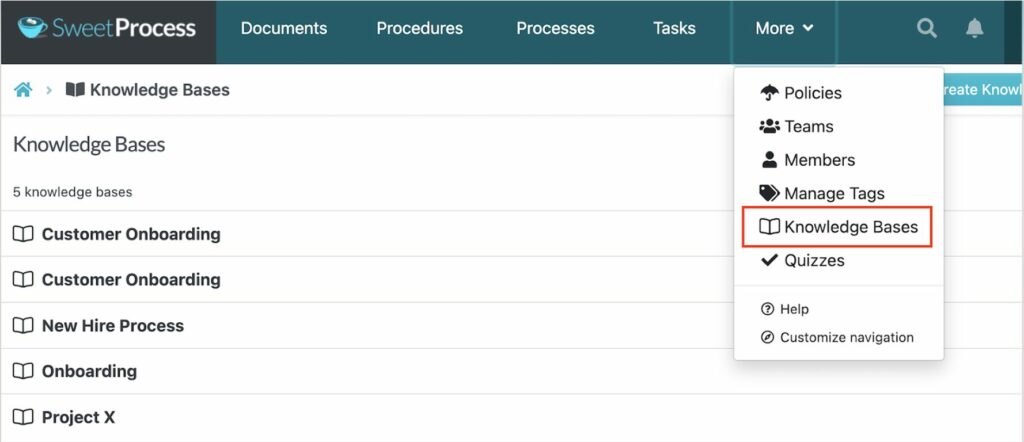
These features have been beneficial for many organizations. One of them is ShipCalm, an e-commerce logistics company that partners with platforms like Amazon and Shopify to provide warehousing and fulfillment services for D2C and retail customers.
As the company grew, the CEO, Ted Fogliani, faced mounting challenges with inconsistent training, poor documentation, and limited visibility into employee onboarding. He searched for a system that could scale with his team and streamline the documentation and delivery of processes. After trying multiple tools, Ted discovered SweetProcess and immediately recognized it as the solution to his operational and onboarding headaches.
Here are the benefits ShipCalm gained from SweetProcess:
- They created and tracked onboarding procedures for each new hire
- The company reduced the learning curve from weeks to just hours or days
- They now use documented SOPs to prove employee competence to customers
- Public-facing knowledge bases were tailored to meet client expectations
- Fast and revision-friendly updates were made to the onboarding documents
Another great example is AEJuice, a Florida-based company that creates drag-and-drop video tools for entrepreneurs and businesses looking to produce professional-quality content. As the company grew, the CEO, Jacob Syrytsia, struggled with constant interruptions from support agents who lacked clarity on internal processes.
With no formal documentation in place, Jacob was forced to answer repetitive questions daily, making it hard to scale his team or step away from operations. After receiving a strong recommendation from a trusted mentor, he gave SweetProcess a try and never looked back.
Here are the benefits AEJuice gained from switching to SweetProcess:
- They built a self-serve training system for onboarding new support agents
- Reduced daily interruptions by documenting recurring questions and solutions
- Centralized all internal knowledge in one platform, organized by department
- The team members accessed visual guides with screenshots and instructions
- Freed up leadership time by making onboarding and support processes repeatable
Why Is Customer Onboarding Important for Your Business?
Here’s why prioritizing onboarding is one of the smartest moves your company can make:
Higher Customer Retention
The first few days after a customer signs up are critical. If users feel lost, overwhelmed, or unsure about how to get value from your product, they’re more likely to churn. Onboarding helps you close that gap.
Imagine signing up for a complex project management tool. The interface looks promising, but you receive no guidance, no emails, and no prompt to take the next step. After 20 minutes of confusion, you exit and never return.
Compare that to a tool that welcomes you with a friendly email, offers an interactive product tour, and assigns a success manager to check in after your first milestone. The difference? One customer churns, the other stays.
A clear onboarding process reduces early drop-offs and helps build a lasting customer relationship by instilling trust and confidence from the outset.
Increased Customer Lifetime Value (CLTV)
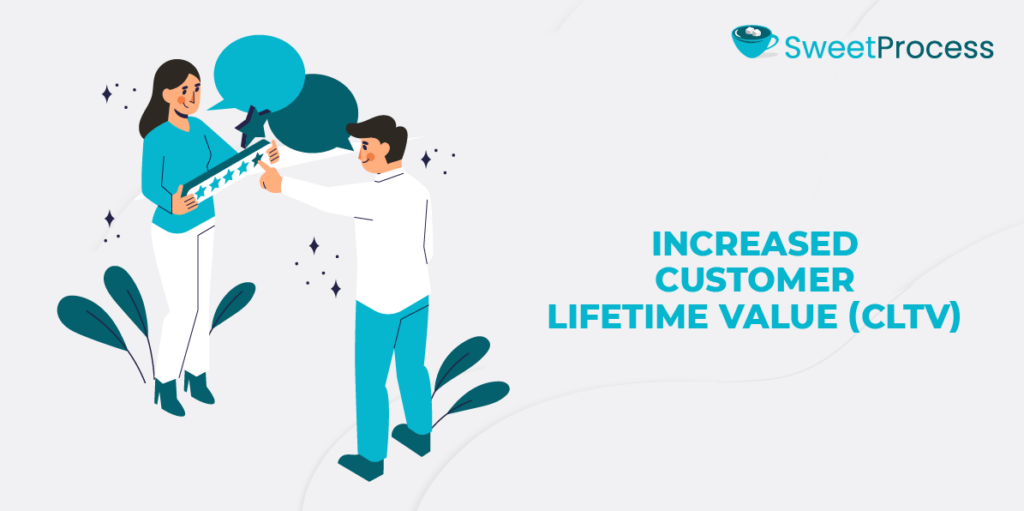
Are new customers discovering all the value your product offers, or are they dropping off after the basics are met? Asking yourself this question will enable you to evaluate how to extend the customer lifetime value of your business.
When existing customers understand how to use your product effectively, they tend to stay longer, engage more deeply, and explore additional features. For instance, a subscription-based accounting software might initially attract new customers for invoicing features. But through onboarding, users discover budgeting tools, tax reporting, and integrations with banking apps.
Each discovery increases the likelihood of them staying and upgrading.
Improved Product Adoption
If you’ve spent months building powerful features, don’t let them go unnoticed.
For instance, your tool might include automated workflows, real-time dashboards, and integration with Slack—but if a user only explores the dashboard and skips the rest, you’ve lost a major opportunity for engagement.
A good onboarding experience ensures new customers explore key areas and learn how those features apply to their unique use case. When executed well, your users will adopt your product much faster.
Enhanced Customer Experience and Brand Perception
This onboarding phase is often the customer’s first real interaction with your brand after making a purchase. Therefore, it’s the best time to showcase your brand’s professionalism by paying attention to the customer.
A smooth and helpful experience demonstrates that your company is organized, trustworthy, and committed to its success. They are more likely to recommend you to other consumers if you offer a comprehensive onboarding process that caters to every need.
Opportunity for Upselling and Cross-Selling
Once customers are onboarded and seeing results, they’re more receptive to additional offers that enhance their experience. For instance, if a customer signs up for one module in your software and starts seeing benefits, they may consider adopting additional solutions, providing you with an opportunity to upsell and cross-sell.
As you onboard users, you can educate them on the core features and mention add-ons that align with their needs.
Referral and Customer Advocacy
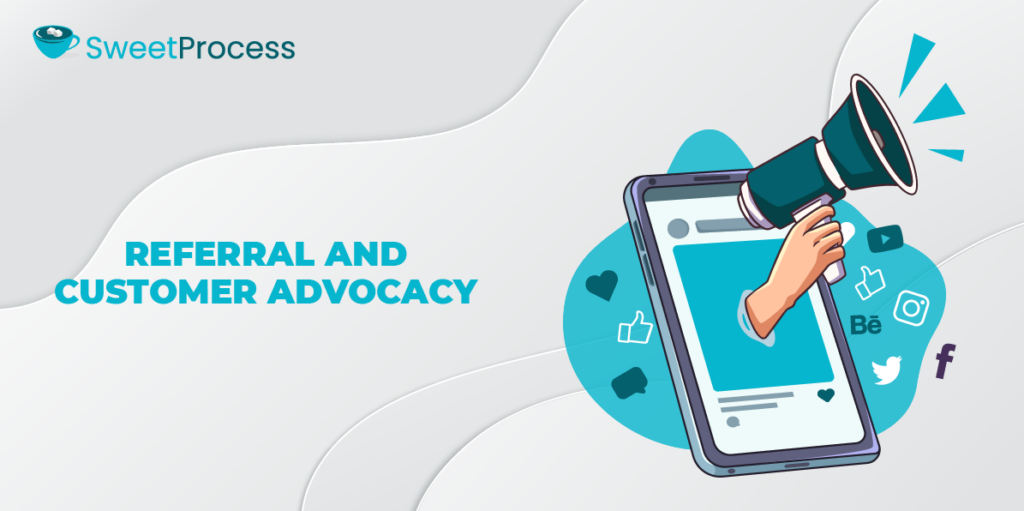
Happy customers will be your best ambassadors. They write reviews, share on social media, and refer to their peers. But no one recommends a product they don’t fully understand or enjoy using.
Onboarding helps build that excitement and customer satisfaction. When users experience a seamless transition from sign-up to success, they’re more inclined to promote your product organically.
Enhanced Brand Perception
What story does your onboarding tell about your brand? You need to structure your process to influence how clients remember you. By offering a well-designed experience, you demonstrate your company’s priorities towards supporting customer success.
This approach leaves a lasting impression, encouraging customers to continue subscribing to your services and purchasing your products.
Real World Customer Onboarding Examples You Can Learn From
Every company approaches onboarding differently. However, the most successful ones consistently deliver value. Here are some standout onboarding frameworks from well-known brands and tips from experts that you can use for your organization:
Calendly
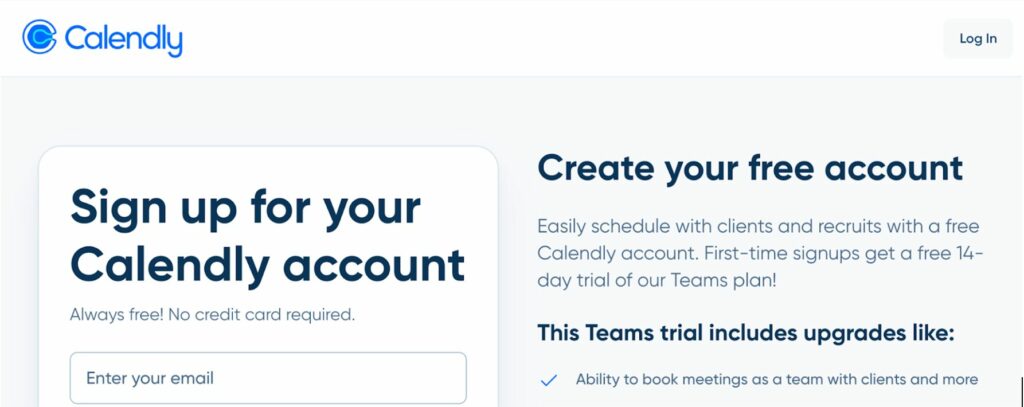
Image source: Calendly
The popular scheduling tool Calendly focuses on helping users achieve success immediately. From the moment users sign up, they’re walked through a lightweight process to connect their calendar and start booking meetings in just a few clicks. The brand employs a straightforward and efficient approach to showcase the product’s core value.
Here’s why this works:
- Minimal setup: Calendly skips unnecessary steps and focuses on immediate calendar integration.
- Interactive prompts: They guide users without requiring extensive tutorials.
- Instant value: Users experience a win (booking a meeting) within minutes, which hooks them early.
Asana
Asana built the Asana Guide, a comprehensive resource hub filled with videos, templates, and workflows to help users onboard themselves based on their own goals. It enables both individuals and teams to learn independently and on demand. This approach works and comes with several benefits:
- Content-rich learning hub: Supports different learning styles; uses videos, articles, and templates.
- Self-paced: Users can explore features based on their needs and team roles.
- Reduces dependency: Minimizes pressure on support teams through self-serve answers.
Instead of just pushing users through tasks, Asana encourages users to explore the library of content.
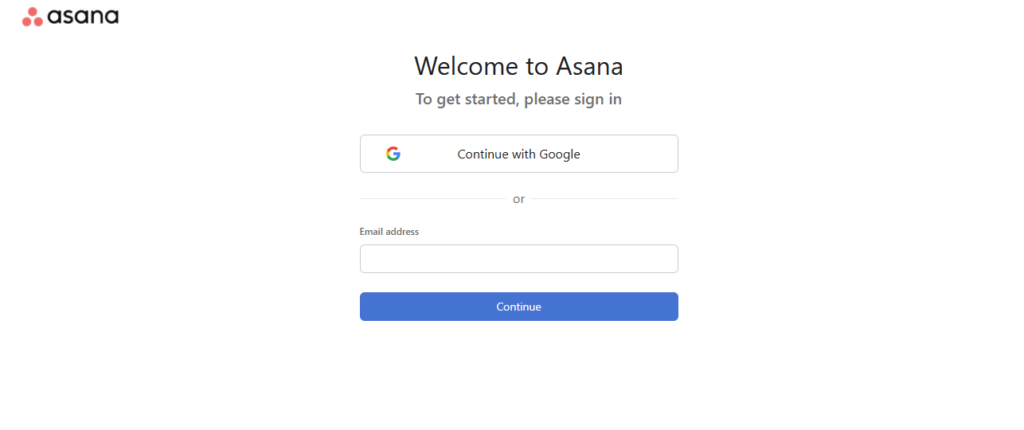
Image source: Asana
HubSpot
As one of the leading CRM and marketing automation platforms, HubSpot delivers an onboarding experience that spans multiple channels, including welcome emails, in-app product tours, tutorial videos, live chat, webinars, and even human-led onboarding sessions for premium users.
Once a user signs up, they receive guidance tailored to their needs and preferences, ensuring they are up to date. New users are also directed to the HubSpot Academy, an expansive library of free training videos and certifications. For larger teams or high-tier accounts, onboarding specialists may host live calls to guide them through the implementation process.
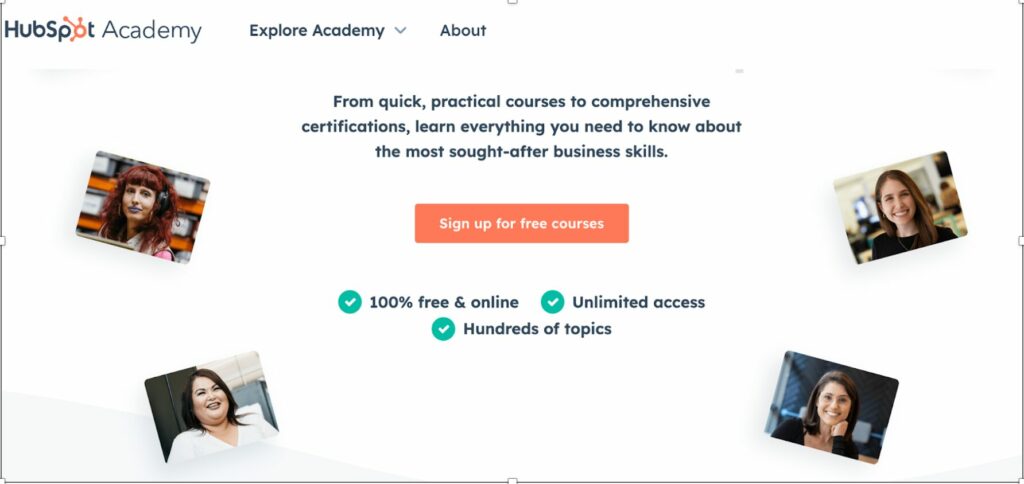
Image source: Hubspot
This tool focuses on:
- Omnichannel reach: Emails, videos, tooltips, and live sessions provide multiple ways to engage with users at different points in their journey.
- Personalized learning paths: HubSpot tailors onboarding based on the user’s role and platform use case.
- Layered guidance: Users can self-serve at their own pace or opt for hands-on help, depending on complexity.
To understand the strategy that drives successful onboarding, here are some insights from founders and customer success leaders who’ve built and scaled onboarding frameworks from the ground up.
Tip 1: Define Clear Roles With a Structured Framework
According to Donna Weber, a customer success consultant, she advocates for companies to develop onboarding frameworks that clearly define roles and eliminate overlap across teams. Her swim lanes approach ensures that everyone from onboarding specialists to account managers knows what’s expected at each step.
Tip 2: Build a Dedicated Customer Onboarding Team
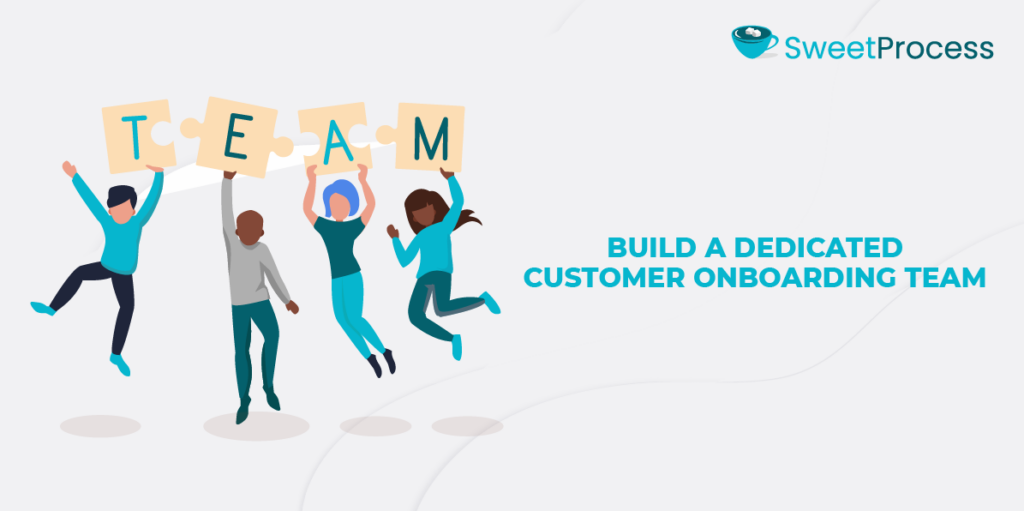
You need employees to follow up with your customers throughout the onboarding process.
The CEO and founder of Infinite Renewals, Jeff Kushmerek, emphasizes building a dedicated onboarding team. He’s seen firsthand how structured implementation teams lead to better customer outcomes from day one and fewer missed steps.
Tip 3: Keep It Simple and Outcome-Focused
Ramli John, the author of product-led onboarding, is a believer in the importance of simplicity in user onboarding. He advocates for focusing on helping users achieve their primary goal quickly, rather than overwhelming them with every feature. This approach builds trust and reduces customer churn by delivering immediate value.
Customer Onboarding Best Practices
As you develop a customer onboarding experience for your organization, there are a few core practices that can consistently help you deliver value. Here they are:
Have Clear Milestones
Your onboarding shouldn’t be vague or open-ended. You need a series of well-defined checkpoints that guide the customer toward specific outcomes. For instance, if you just onboarded a new client to your payroll software, you can break your milestones into these steps:
- Add employee data
- Connect a bank account
- Run your first test payroll
These milestones give the customer a sense of accomplishment and momentum, providing a boost to their confidence. This approach makes it easier to track where users drop off and gives users the morale to keep using your tool as they progress.
Assign a Dedicated Customer Success Manager (CSM)
Even if your business has a self-serve environment, it’s still essential to assign a point person for support during onboarding. This manager’s role may include conducting weekly onboarding calls, troubleshooting technical issues, and monitoring implementation milestones. This personal touch:
- Creates a single source of accountability and communication
- Builds a human connection with your brand
- Increases responsiveness
If a customer knows who to call when they have a hiccup, they’re more likely to stick around and get back on track quickly.
Use Interactive Guidance and Tooltips
Instead of using static help documents, consider using interactive tooltips and prompts to guide users in real time. For instance, when a user logs into your platform for the first time, they’re encouraged to “Click here to upload your first document” or “Start by creating your first project.” These nudges provide instruction without disrupting the flow.
Additionally, they reduce confusion because the user knows what to do.
Track Progress Metrics and Iterate
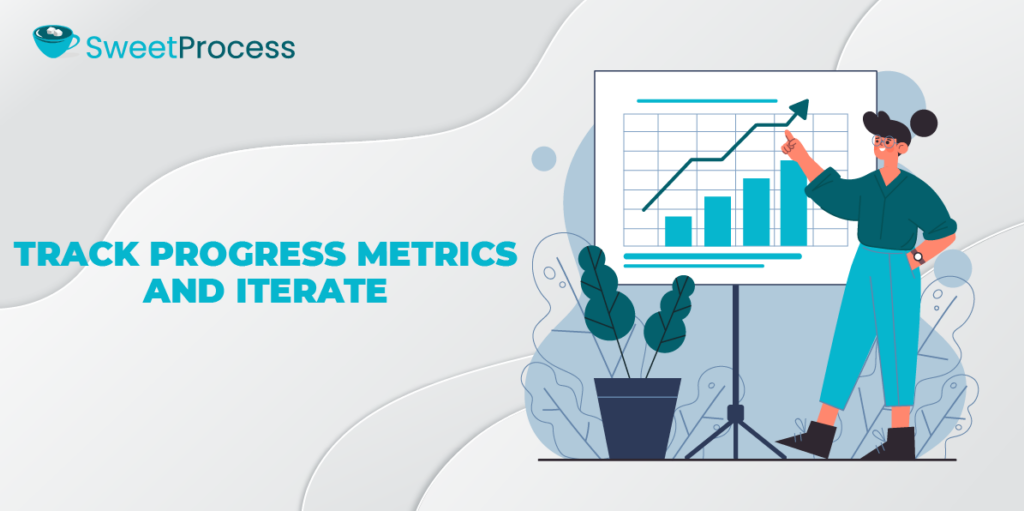
You can’t improve what you don’t measure. Monitoring user behavior during onboarding helps you identify areas for improvement and optimize the customer experience. For example, if you notice that most users typically abandon the process at a specific stage, this is a clear sign you need to improve the guidance or support during that step.
Tracking progress ensures that you make data-driven decisions to improve your onboarding.
Design Interactive Product Tours
The best way to introduce your customers to the core features is by creating an interactive product tour. As you design it, you can break it down and make the tour goal-based and progressive. For instance, you can guide your users on how to create their first task, assigning a due date, and inviting team members.
This way, you can:
- Keep users engaged and focused on one task at a time
- Allow users to learn by doing
- Encourage active participation, increasing product familiarity and confidence
Onboard New Customers Seamlessly Using SweetProcess
A clunky, confusing onboarding experience can lose you customers before they’ve even seen your best features. But a smooth, structured process? That’s how you turn sign-ups into loyal brand advocates and achieve long-term revenue growth. But to deliver a consistent and scalable experience, you need the right tools to document, guide, and optimize every step.
That’s where SweetProcess comes in. Whether you’re onboarding a few or multiple users, SweetProcess helps you create clear SOPs, interactive checklists, public-facing knowledge bases, and collaborative workflows that make onboarding smooth for both your team and your customers.
Simplify your onboarding and build trust from day one with SweetProcess. Sign up here to start your 14-day free trial.. No credit card is required!
